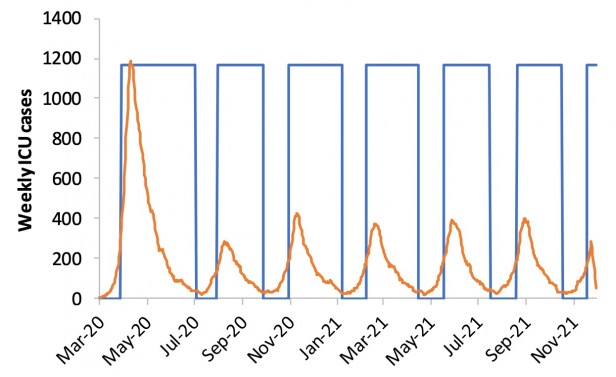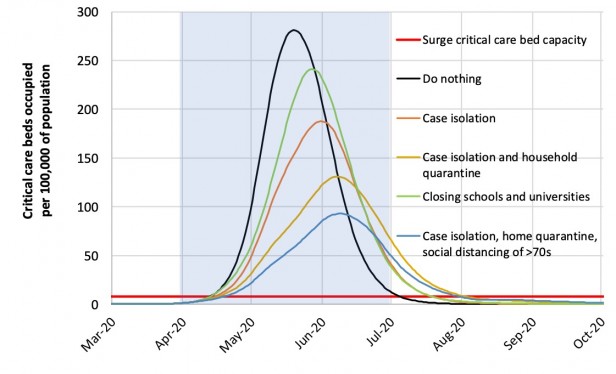Osteoarthritis, the number one cause
of disability in the U.S., is a disease marked by a progressively
debilitating stiffness and pain in the joints. The stiffness and pain
results from degeneration in the joint cartilage, degeneration in the
bone tissue underlying the joints, and bony overgrowth as well. (CDC
2011) The CDC estimates that over 27 million Americans have the
condition.
It has long been observed that skeletal fluorosis (a bone disease
caused by too much fluoride) can cause symptoms and degenerative changes
that closely resemble osteoarthritis. While these arthritic effects
were once considered to be confined to those with skeletal fluorosis,
recent research shows that fluoride can cause osteoarthritis in the
absence of traditionally defined fluorosis.
If conventional methods for detecting skeletal fluorosis continue to
be used, many individuals with fluoride-induced osteoarthritis will not
receive the correct diagnosis and treatment.
Symptoms and Bone Changes of Skeletal Fluorosis Can Closely Resemble Osteoarthritis
The symptoms of skeletal fluorosis (chronic joint pain and stiffness)
mimic the symptoms of osteoarthritis. As an example of this, the
following figure displays the findings from a recent Chinese study that
investigated the prevalence of osteoarthritic symptoms in populations
based on the level of fluoride in the drinking water:

It’s not just the symptoms of fluorosis that resemble osteoarthritis;
the bone changes of fluorosis resemble osteoarthritis as well. Skeletal
fluorosis causes bony outgrowths (i.e., osteophytes), degradation and
calcification of cartilage, osteosclerosis, and reduced space between
the joint — conditions common to osteoarthritis, including
osteoarthritis of the spine (
spondylosis). As noted in a recent study:
“because some of the early clinical symptoms resemble
those of osteoarthritis, the first clinical phases of skeletal
fluorosis could be easily misdiagnosed.” (Petrone 2011).
Fluoride Intake Can Cause Osteoarthritis
Not only can skeletal fluorosis produce bone changes that resemble
osteoarthritis; it can cause osteoarthritis itself. (Luo 2012; Su 2012;
Bao 2003; Savas 2001; Tartatovskaya 1995; Chen 1988; Xu 1987).
This fact was
convincingly demonstrated
in a recent, well-conducted study by a Chinese research group. (Bao
2003) In the study, the researchers x-rayed the right hands of adults
living in a fluorosis area. They then compared these x-rays with the
findings of a nearby non-fluorosis area and the findings of a nationwide
study that they had previously conducted. The incidence of
osteoarthritis in the fluorosis area was “remarkably higher” than in
either the adjacent area or the nation as a whole.
According to the
researchers, “the osteoarthritis caused by fluorosis differs from
ordinary osteoarthritis in severity
rather than in nature.”
Fluoride Can Cause Osteoarthritis BEFORE Skeletal Fluorosis Is Evident
For years, U.S. health authorities have assumed that fluoride does
not cause arthritic symptoms before the traditional bone changes of
fluorosis are evident on x-ray. Recent research strongly suggests that
this long-held assumption is in error.
Savas (2001)
Of particular significance is a study from Turkey which found strong
evidence of a fluoride-osteoarthritis link in individuals who did not
have telltale sign of skeletal fluorosis. (Savas 2001) According to the
study, the most common radiological finding among the fluorosis patients
was knee osteoarthritis — which was found in 66% of the 56 fluorosis
patients examined. By contrast, only 3.6% of the fluorosis patients had
axial osteosclerosis (i.e., hyperdense bone of the lower spine and
pelvis), which is regarded by U.S. authorities to be the
first
radiological sign of fluorosis. Thus, many of the fluorosis patients
had knee osteoarthritis without simultaneously showing the spinal bone
changes that US authorities still deem necessary to warrant a diagnosis
of skeletal fluorosis.
Tartatovskaya (1995)
Consistent with this Turkish study, a team of Russian researchers
have found that fluoride-exposed individuals suffer a significantly
elevated rate of osteoarthritis in the absence of radiologically
detectable fluorosis in the spine. (Tartatovskaya 1995). The
researchers, who were interested in determining whether fluoride
exposure can exacerbate the wear and tear on joints from
physical stress, examined
two groups of mine workers with job activities that exposed them to
significant vibration stress (e.g., drilling). Workers who were exposed
to fluoride dusts were found to have a significantly higher rate of
elbow osteoarthritis (48.7% vs. 12.9%) and spondylosis (83.3% vs. 41.1%)
than the mine workers not exposed to fluoride dusts.
To test the veracity of these findings, the Russian researchers
conducted animal studies where they subjected mice to the isolated and
combined effects of vibration and fluoride exposure. As with the mine
workers, the mice exposed to both vibration stress and fluoride
experienced a greater frequency and earlier onset of degenerative joint
changes than the mice exposed to either factor alone. The Russian
researchers thus concluded that fluoride exposure can exacerbate the
degenerative effect of physical stress on joints with or without the
presence of radiologically detectable skeletal fluorosis.
Czerwinski (1988)
Consistent with the Turkish and Russian studies, a team of Polish
researchers examined 2,258 fluoride-exposed workers in the aluminum
industry and found high rates of arthritic effects in the absence of
fluorosis bone changes. (Czerwinski 1988). Although the researchers
could only detect fluorosis by x-ray in 1% of the workers, they found
high rates of joint pain in the knee, hip, elbow, shoulder and lumbar
spine, with the pains correlating to the duration of fluoride exposure.
According to the researchers, “the only characteristic feature” of
fluorosis is “multiple-joint involvement,” which “would differentiate
fluorosis from monoarticular osteoarthritis, but unfortunately not from
multiple-joint osteoarthritis or rheumatoid arthritis.”
Cao (2003)
Even among patients with crippling forms of fluorosis, degenerative joint damage can be the primary radiological finding,
not
osteosclerosis. In one study, for example, Chinese researchers found
that 5 of 19 patients with crippling skeletal fluorosis “presented with
mainly articular injury but relatively mild bone pathology.” (Cao 2003).
The researchers termed this condition “fluorosis arthropathy.”
The Misdiagnosis Problem











.jpg)

